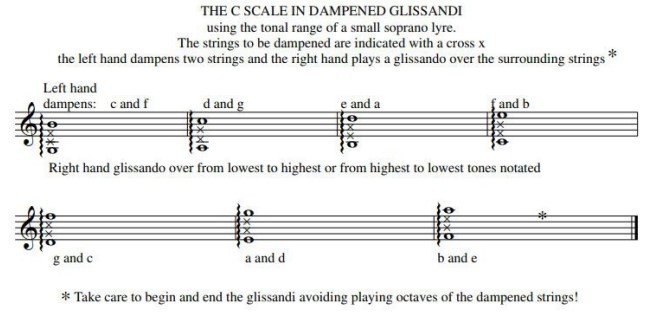Improvising on Unusual Pentatonic Scales
/John Billing on Pentatonic Modes on the Seven Root Tones
Dear Friends, Some of you who met me last year in Germany and/or Prague will remember my interest in what I called “Dampened Glissandi”. This has developed into a more specific interest in the pentatonic scales which are produced by dampening two strings; see the music examples 1/ and 2/ below.
Music Example 1/
Music Example 2/
The Music Examples above illustrate how far I had come with this last year. The resulting five tone chords/clusters I had already used in compositions years ago – a few of these were played last year, notably “The Waxing and Waning” and “Willows Whiten” from two of my books, respectively “Light on the Lake” and “Gentillesses”
This year I began studying these scales in a different way, using the pattern of three notes and two notes separated by two missing notes (in each scale, the third and the seventh). Music example 3/ shows the direction of my research.
From these seven scales I discarded numbers I, IV and V (I fondly call number V the Waldorf pentatonic!) I’ve been much more interested in discovering more about the unfamiliar, curious and interestingly “minor” sounding scales. Number vi may be more well known, it is common in Japanese music; as far as I can discover it is called “hirajoshi”. Here they are in example 4/
So with these four I have been working every day, playing the scales in a variety of configurations all over the tonal compass of the lyre, improvising freely (and using dampened glissandi) and – most recently composing.
I would like to encourage all lyrists to practice with these scales which lend themselves to improvisation as much as our well known “major” pentatonic scales.
I would be deeply grateful to hear from anyone who knows anything at all about these four scales so please do contact me if you would be so kind to share!
John Billing
Ireland 05/2023





